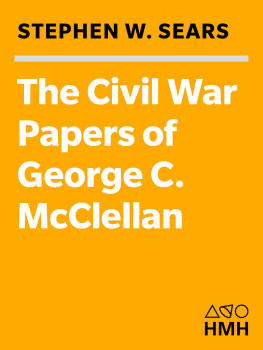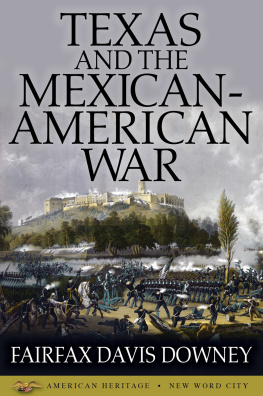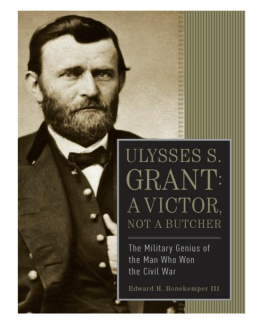ARTICLES OF WAR
To Arlan Gilbert:
For many years a distinguished teacher at, and destined to be forever the greatest historian of, Hillsdale College.
In appreciation of his friendship.
Published by Stackpole Books
An imprint of The Rowman & Littlefield Publishing Group, Inc.
4501 Forbes Boulevard, Suite 200, Lanham, Maryland 20706
www.rowman.com
Unit A, Whitacre Mews, 26-34 Stannary Street, London SE11 4AB
Distributed by NATIONAL BOOK NETWORK
Copyright 2001 by Stackpole Books
First Stackpole paperback edition 2017
All rights reserved. No part of this book may be reproduced in any form or by any electronic or mechanical means, including information storage and retrieval systems, without written permission from the publisher, except by a reviewer who may quote passages in a review.
British Library Cataloguing in Publication Information Available
Library of Congress Cataloging-in-Publication Data
The hardback edition of this book was previously cataloged by the Library of Congress as follows:
Castel, Albert E.
Articles of war: winners, losers, and some who were both during the Civil War / Albert Castel.1st ed.
p. cm.
Includes index.
ISBN: 0-8117-0005-4
1. GeneralsUnited StatesBibliography. 2. GeneralsConfederate States of America Bibliography. 3. United StatesHistoryCivil War, 1861-1865Campaigns. 4. United StatesHistoryCivil War, 1861-1865Bibliography. I. Title.
E467 .C43 2001
972.730922dc21
00-054748
ISBN 978-0-8117-0005-4 (cloth)
ISBN 978-0-8117-3670-1 (paper : alk. paper)
ISBN 978-0-8117-5364-7 (electronic)
 The paper used in this publication meets the minimum requirements of American National Standard for Information SciencesPermanence of Paper for Printed Library Materials, ANSI/NISO Z39.48-1992.
The paper used in this publication meets the minimum requirements of American National Standard for Information SciencesPermanence of Paper for Printed Library Materials, ANSI/NISO Z39.48-1992.
Printed in the United States of America
PREFACE
T he articles of war in this collection were written over a span of nearly fifty years, with the oldest having been penned in its original form in the spring of 1952 and the newest during March/April 2000. Many were motivated, to be frank, by a desire to keep my wine cellar stocked in the style to which I wished to become accustomed. Even so, and despite most of them having been published in popular history magazines, most were either based on primary sources or derived from books I had authored that were as scholarly as I could make them. Only when the subject matter was too large for that type of researchsuch as, for examples, McClellan, Sherman, or Grants Vicksburg Campaigndid I rely on secondary sources, and even then I employed memoirs, letters, and firsthand accounts.
As for the literary aspect, the sole difference between how I write for a magazine aimed at a general audience and a journal intended for professional historians is that articles for the latter are more analytical, whereas those submitted to the former are predominantly narratives. Otherwise I write the same for both, simply because that is the way I write. Whatever my subject and potential readership, I strive for clarity and readability, in the belief that history should be enjoyable as well as informative. That this collection of articles has been published long after the majority of them, so I assumed, had died a natural death would seem to indicate that perhaps I have not been altogether unsuccessful in realizing this goal.
I would, though, be the first to acknowledge that the unique popularity of Civil War history is the fundamental reason for the resuscitation of these articles, just as it is for all of my Civil War books remaining in print and continuing to enjoy respectable sales. In todays academia, where the not-so-holy trinity of race/gender/class holds sway, Civil War history increasingly tends to be looked upon with disdain because it deals chiefly withas it must, given what it issuch old-fashioned and hence unfashionable matters as political and military events and the men who figured in them. But, happily, outside the hollow (in the sense of genuine scholarly content) halls of ivy, that history continues to attract an abundance of devotees, and it is to them I direct this collection, although I hope that some Ph.D.-credentialed historians will find what appears herein of interest and use.
More could be said but need not be. So on to these Articles of Wara title for which I am indebted, as I am for so many, many things, to my wife.
ACKNOWLEDGMENTS
First and above all I thank Civil War Times for permission by it and its publisher, Primedia, to republish herein the articles that have appeared in it and its lamentably defunct sister journal, Columbiad. These articles, spanning a third of a century, constitute the foundation for this book.
My thanks also goes to Dr. Roger Rosentreter, editor of Michigan History, for permission to publish in this collection the article on Alpheus S. Williams; to North & South magazine for authorizing the publication of the article on William Clarke Quantrill that originally appeared in Civil War: The Magazine of the Civil War Society, which has ceased to exist and whose rights it succeeded; to the Louisiana State University Press for permission to present an expanded version in these pages of the introduction I wrote for its edition of John Allan Wyeths That Devil Forrest; to Decision Games, publisher of Strategy and Tactics wherein appeared the article and accompanying map on Grants Vicksburg Campaign; and to Forbes, now the publisher of American Heritage, for not only enabling me to present here the article on Sam Houston but also to be of financial assistance to it.
As has almost become routine during the past decade, I extend my gratitude to Larry and Priscilla Massie of the Allegan Forest of their beloved Michigan for their invaluable but much-valued assistance in providing many of the illustrations for this book. I am blessed with friends, and I bless few more than Larry and Priscilla.
My gratitude, too, to Leigh Ann Berry, editor for this book at Stackpole Books, and to William C. Jack Davis, also a Stackpole editor and, as anyone familiar with Civil War history knows, premier historian of that subject. Together they made this book possible.
So also did Arlan Gilbert, who at a time of crisis in my life did what I was unable to do. I could say more about Arlan, but that already is said in the dedication.
AUTHORS NOTE
I n writing about war authors must, out of literary necessity, employ certain conventions of terminology. One of them is to describe a commander, a single person, doing things that in fact were done by thousands, perhaps millions, of people. Thus we read of Napoleon conquering Europe, of Lee winning the Battle of Fredericksburg, of Eisenhower invading Normandy on D-Day, etc., etc., ad infinitum. This is especially true when, as in this book, the focus is on military and political leaders. Hence, both to demonstrate that I am aware of the artificiality of such expressions and to provide readers with a bit of humor before they embark upon the following accounts of grim conflict, I now will quote from a letter that appeared in the July 3, 1864, issue of The Memphis Appeal, which then was being published in Atlanta, Georgia. Written by a Confederate soldier fighting Shermans army as it advanced on Atlanta, it reveals that the men in the ranks knew the reality of war, and that although they resented the glorification of the generals they at the same time could laugh about ita sarcastic laugh, but nevertheless a laugh.








 The paper used in this publication meets the minimum requirements of American National Standard for Information SciencesPermanence of Paper for Printed Library Materials, ANSI/NISO Z39.48-1992.
The paper used in this publication meets the minimum requirements of American National Standard for Information SciencesPermanence of Paper for Printed Library Materials, ANSI/NISO Z39.48-1992.